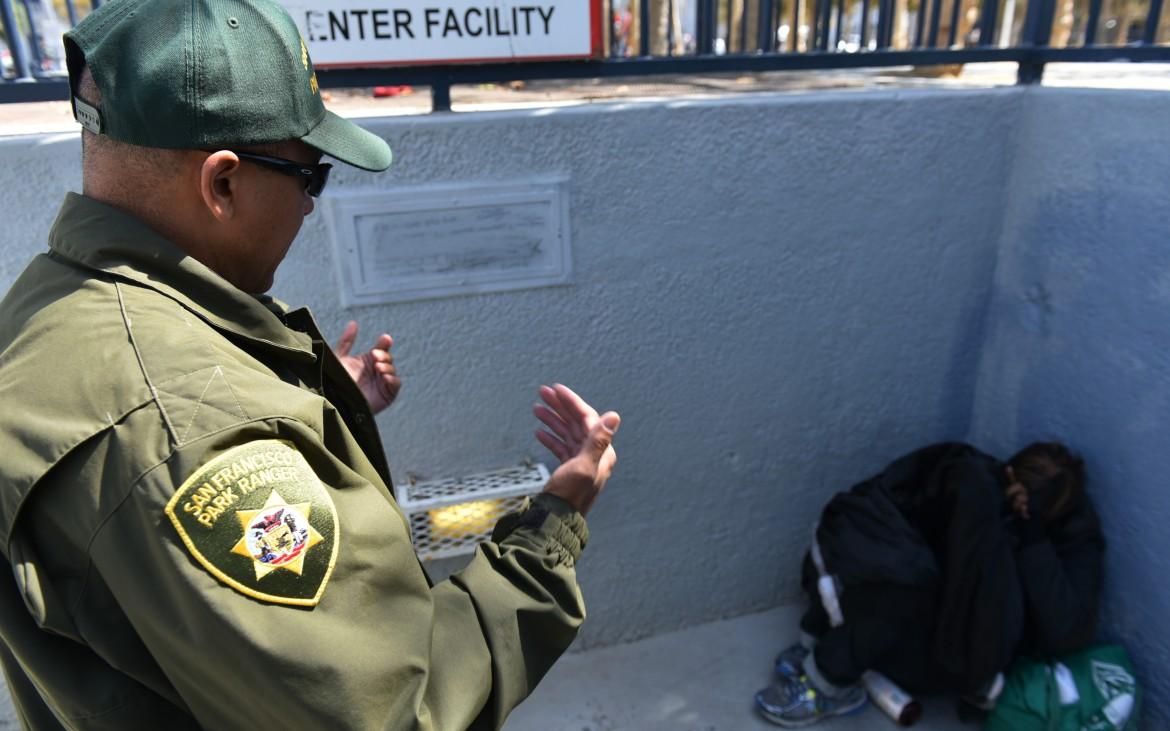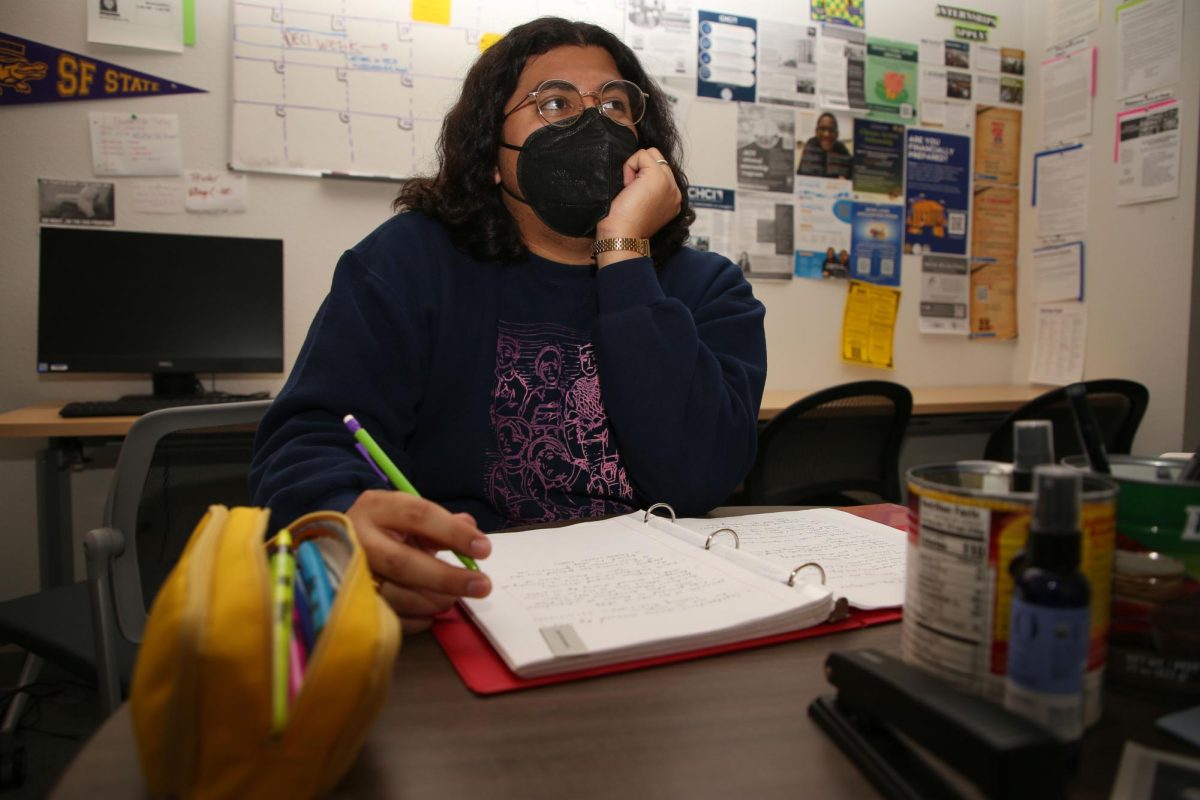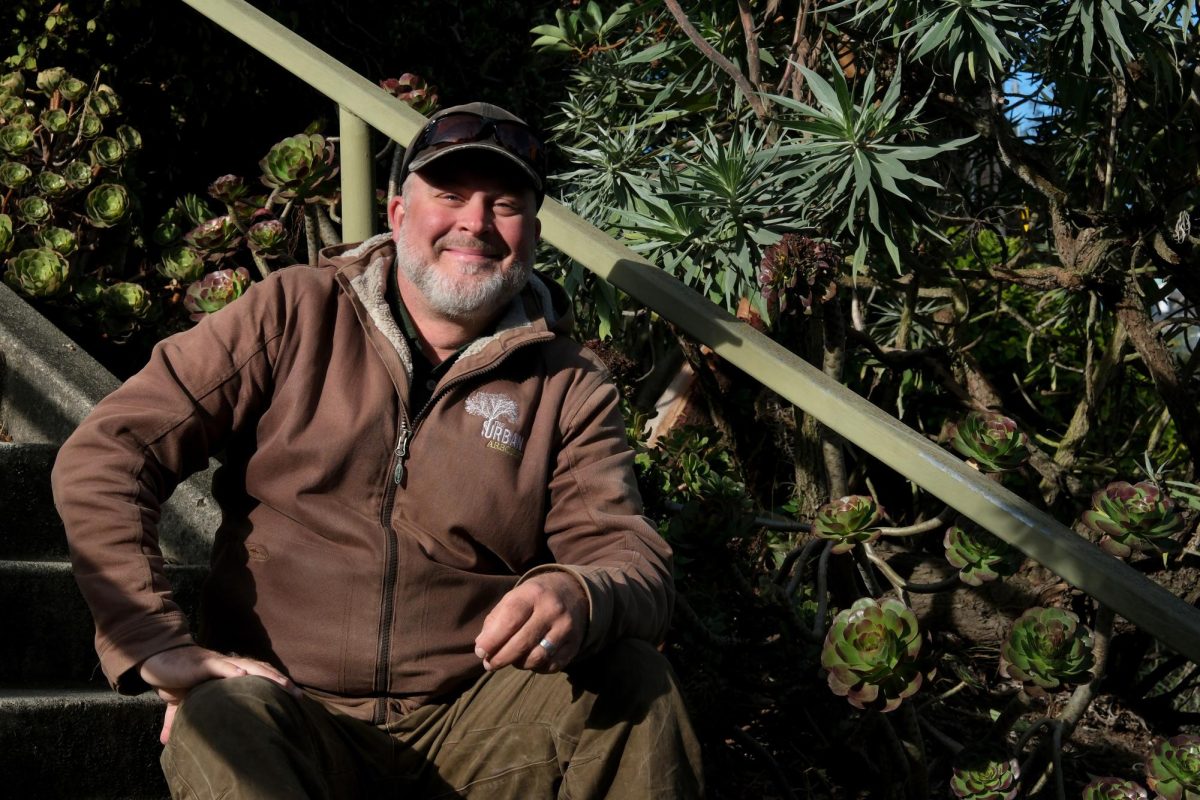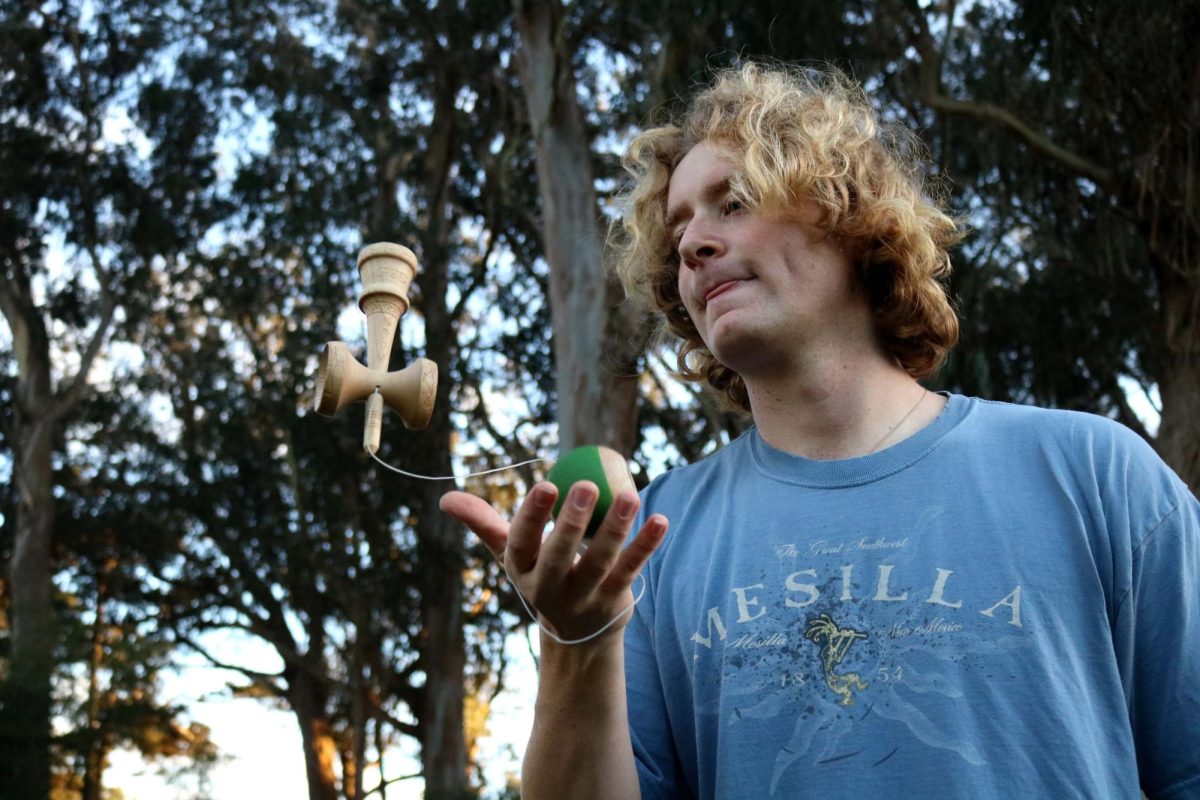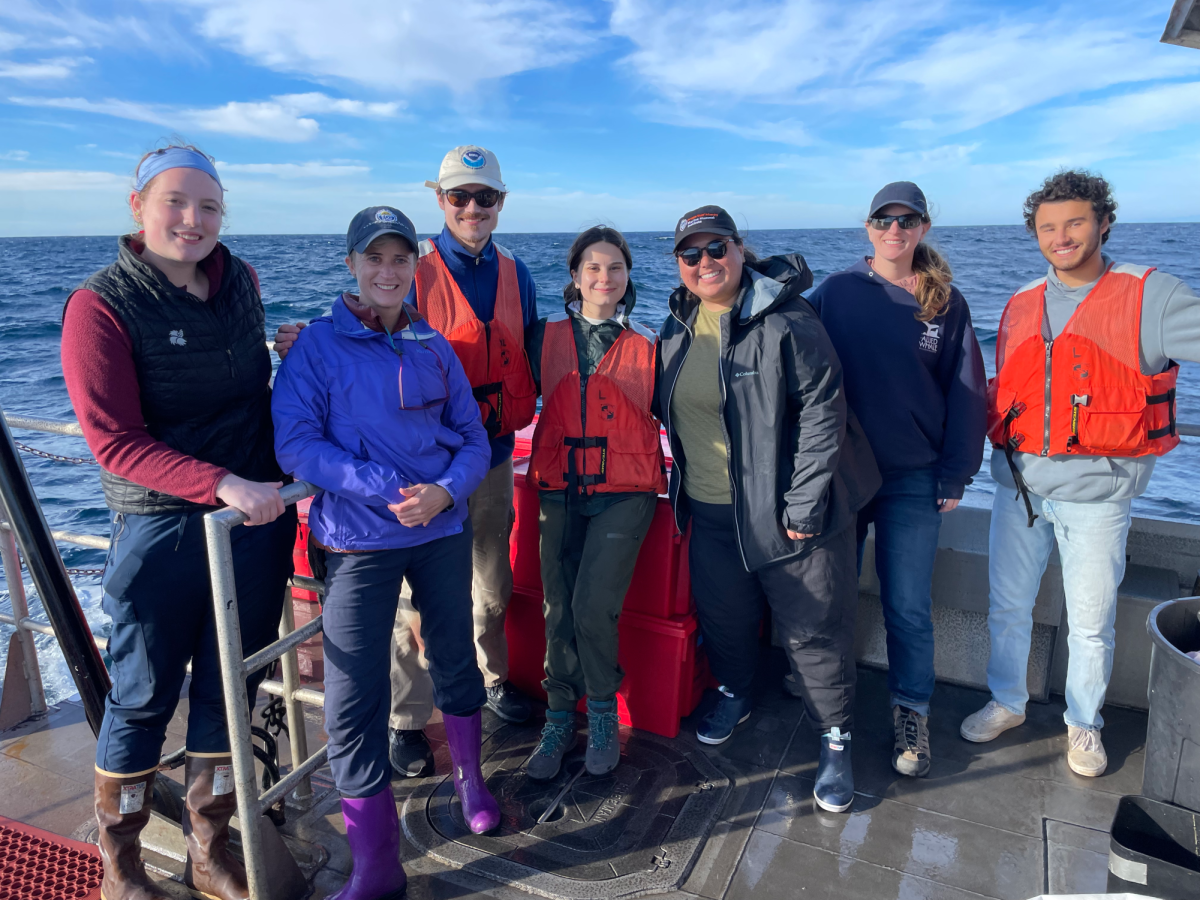San Francisco Park Ranger Vidal asks for a homeless man to leave an alcove at Civic Center Plaza where he slept, Sep.11. (Qing Huang/ Xpress)
By Sean McGrier
[dropcap size=”50px”]W[/dropcap]hen Super Bowl 50 arrives in the Bay Area in February, it will bring together two teams battling for NFL supremacy. It will also parade an internationally-broadcasted spectacle that attracts millions of viewers. Last season’s championship game lured a television audience of more than 114 million people, making it the single most-watched U.S. television event of all time, according to host network CBS. Tens of thousands more flocked to Glendale, Arizona for the game and the lead-up activities that came with it.
This season, the carnival rolls into the home of the San Francisco 49ers.
Super Bowl 50 won’t be played in San Francisco, though. In fact, the two yet-to-be-determined combatants will meet at the Niners’ new, one-year-old venue, Santa Clara’s Levi’s Stadium, 43 miles and two counties south of San Francisco City Hall.
San Francisco will, however, play host to Super Bowl City, a media village where, in the words of a Sept. 1 NFL press release, “fan experiences are free and open to the public.”
The event site, which is under construction now, will be centered at Justin Herman Plaza along the Embarcadero.
Mayor Ed Lee wants to show the world his city’s best face in the eight days leading up to the Feb. 7 game. According to Lee, there’s no room for San Francisco’s homeless population in that picture.
“We are always going to be supportive of (the homeless),” Lee told reporters gathered at Justin Herman Plaza on Aug. 25. “But you are going to have to leave the street. Not just because it is illegal, but because it is dangerous.”

Although Lee is not short on critics, he is expected to breeze through his 2015 re-election bid. His comments about the Super Bowl, however, have confused advocates over where exactly the mayor expects homeless people to go.
“We just thought that (the mayor’s) comments were mean and really misleading,” said Jennifer Friedenbach, executive director of the San Francisco-based Coalition on Homelessness. “He’s trying to say that he’s going to have housing for the homeless and he’s not.”
Mayor Lee has pledged to have 500 city-provided housing units ready in time for San Francisco’s Super Bowl close-up. Lee is also counting on the recently-opened Navigation Center, located at 1950 Mission St., to take in more people in need of respite and prolonged boarding alike.
Since the center opened in March, it has taken in entire homeless encampments by the dozens, even allowing people to bring in friends and pets to comfort them as they work to get off the streets for good. The facility is not designed to help more than 75 people at a time, and City Hall is working to at least double that capacity. In a Sept. 10 press release, the mayor announced a $3 million “reallocation of City funds” to expand the Navigation Center project.
But 500 new beds and an augmented Navigation Center can house only a small fraction of the city’s homeless population, which a January 2015 San Francisco Homeless Point-in-Time Count & Survey reported to be 7,539 sheltered and unsheltered individuals.
“The housing units he’s talking about are going to be long filled-up by the time the Super Bowl comes,” Friedenbach said. “It’s either political–he’s responding to all the vitriol that’s appearing in the Chronicle and wants to seem like a ‘get-tough-on-poor-people’ candidate in an election year, or there’s the idea that if you make it as uncomfortable for people as possible, then they will simply disappear.”

Jackie Juarez, 51, is a homeless San Francisco native. She’s also three months pregnant and has been receiving care from HealthRight 360 and the Homeless Prenatal Program, both located in the Mission District. Juarez said police have increased sweeps of homeless encampments since late August, but also said the police haven’t told the people they are removing where they’re supposed to go next.
“They come in and tell us to pack up our stuff and they stand there and watch,” Juarez said. “They say they’ll give us a fine of $250 to $500 if they catch us back there,” a price Juarez said she can’t come close to paying.
Juarez said most of the sweeps have happened in the South of Market, a neighborhood represented by Jane Kim on the San Francisco Board of Supervisors. According to Kim, the city’s current approach to its homeless problem falls short.
“Just moving people around isn’t a solution,” Kim said in an email. “We should be thinking outside the box for innovative solutions that have a track record of success in other similar urban environments as San Francisco because the status quo and heavy handed sweeps and criminalization clearly haven’t achieved long-term success.”
The Navigation Center was supposed to represent that very ‘outside-the-box’ thinking. The mayor’s September expansion announcement, which called on greater private sector investment, championed the project as a “first-of-its-kind” pilot program that had already helped “200 homeless San Franciscans in just the past five months by removing barriers that prevent people from reaching out and accepting the services they need.”
Kim said the needs of San Francisco’s poorest inhabitants should be addressed “every day, not just for the Super Bowl when corporate interests and tourists are here.”
April, a man in his late 50s, has been homeless since he moved to San Francisco from Phoenix in 2013. He declined to give his full name and age, citing his police record and fear of police retaliation.

“They’re just trying to put on a show for the Super Bowl coming in,” April said. “Phoenix did the same thing during their Super Bowl. They chased everybody to the canal, which is out of the way.”
April, who said he also spent a lot of time on the streets while living in Phoenix found sufficient aid with that city’s Lodestar Day Resource Center (LDRC). He went as far as to call that program “beautiful,” but said medical needs motivated his move to California.
April compared San Francisco’s approach to respite and rehabilitation to Phoenix’s LDRC with six words: “Out of sight, out of mind.”
The Coalition on Homelessness has a number of programs designed to empower the most destitute people in San Francisco. Among the organization’s programs is the Street Sheet, a bimonthly, newspaper-style publication that features content from homeless and formerly-homeless individuals. The Coalition hands copies of the papers to homeless and low-income people who sell them and pocket the profits. The aim of the project is empowerment, something Friedenbach sees as a stark contrast to the methods deployed by city government.
“We’ve been criminalizing (homeless) people in San Francisco for the past three decades pretty intensely,” Friedenbach said. “People have not disappeared. Human beings do not have the ability to disappear.”


